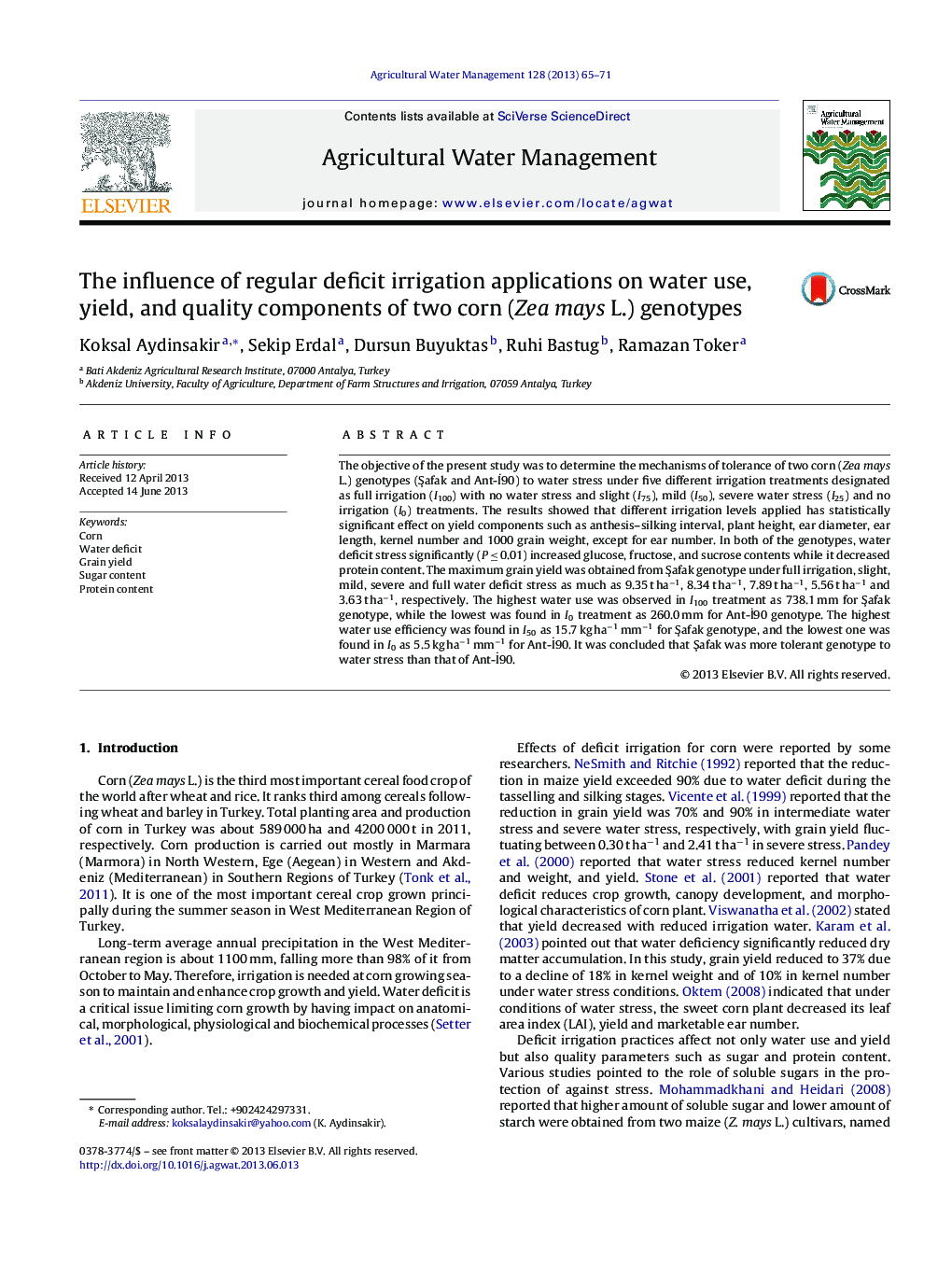| Article ID | Journal | Published Year | Pages | File Type |
|---|---|---|---|---|
| 6364084 | Agricultural Water Management | 2013 | 7 Pages |
Abstract
The objective of the present study was to determine the mechanisms of tolerance of two corn (Zea mays L.) genotypes (Åafak and Ant-Ä°90) to water stress under five different irrigation treatments designated as full irrigation (I100) with no water stress and slight (I75), mild (I50), severe water stress (I25) and no irrigation (I0) treatments. The results showed that different irrigation levels applied has statistically significant effect on yield components such as anthesis-silking interval, plant height, ear diameter, ear length, kernel number and 1000 grain weight, except for ear number. In both of the genotypes, water deficit stress significantly (P â¤Â 0.01) increased glucose, fructose, and sucrose contents while it decreased protein content. The maximum grain yield was obtained from Åafak genotype under full irrigation, slight, mild, severe and full water deficit stress as much as 9.35 t haâ1, 8.34 t haâ1, 7.89 t haâ1, 5.56 t haâ1 and 3.63 t haâ1, respectively. The highest water use was observed in I100 treatment as 738.1 mm for Åafak genotype, while the lowest was found in I0 treatment as 260.0 mm for Ant-Ä°90 genotype. The highest water use efficiency was found in I50 as 15.7 kg haâ1 mmâ1 for Åafak genotype, and the lowest one was found in I0 as 5.5 kg haâ1 mmâ1 for Ant-Ä°90. It was concluded that Åafak was more tolerant genotype to water stress than that of Ant-Ä°90.
Related Topics
Life Sciences
Agricultural and Biological Sciences
Agronomy and Crop Science
Authors
Koksal Aydinsakir, Sekip Erdal, Dursun Buyuktas, Ruhi Bastug, Ramazan Toker,
